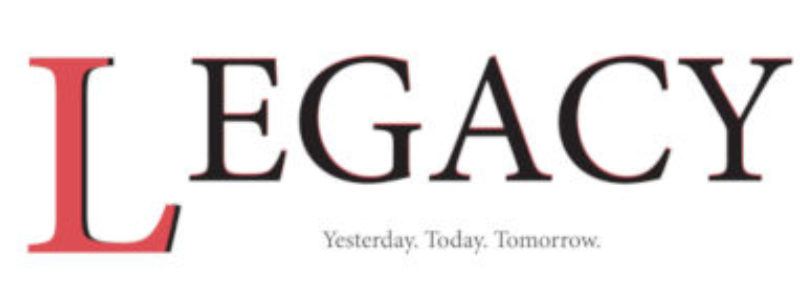By: Maria-Paula
August being the Breastfeeding Awareness Month, the U.S. Breastfeeding Committee dedicated the first week to initiating a difference for working parents. Statistics from the Virginia Department of Health highlights that parents with less than three months of maternity leave stop breastfeeding earlier than those who receive three or more months of leave.
Despite new parents making the difficult decision to return to work after childbirth for all state guaranteed workers, they also have to deal with the logistical challenges of extracting milk at work while separated from their children.
This year’s Breastfeeding Awareness Month is the first since Congress passed the PUMP (Providing Urgent Maternal Protections for Nursing Mothers) Act, which expands nursing workers’ right to private lactation spaces and breaks for pumping in almost all workplaces, as well as the Pregnant Workers Fairness Act. The Act pushes for employers to provide their employees with clean, private and safe spaces for expressing breast milk while at work.
“Widespread use of these tools will help create an environment where pregnant and postpartum workers can succeed in work and family life balance,” said State WIC Breastfeeding Coordinator, Jarene Fleming.
Richmond and Henrico Health Districts, RHHD, in a statement argued that lactation spaces are not only a public health recommendation but an important part of their workplace landscape for breastfeeding employees. They pointed out having small lactation rooms in Cary Street, East Henrico, and West Henrico.
Joanna Cirillo, a RHHD Public Health Nurse Supervisor and mom to Matilda, who turns one next month shares her experience during her pre-partum and post-partum season at work.
RHHD as part of a department funding the nursing employee’s initiative to make the lactation spaces feel safer and cozier for breastfeeding workers ensured Cirillo spent her final days in the office ahead of maternity leave. The Cary Street room was refreshed by adding wallpaper to complement the existing milk fridge, warm lighting, and pump cleaning supplies.
Also, an important touch which came from a former employee in the facility, Stephanie Toney, is a bulletin board where nursing parents post photos of their infants to look at while they pumped (a strategy—like other relaxation techniques—that has proven to increase milk output). Having worked in a maternity clinic previously, she knew the impact of such moves in improving the experience for nursing employees.
“Such a big transition is so hard, and there is nothing that you or your workplace can do to make the transition easier and more welcoming. Obviously, we know breastmilk is good for babies. You will be more productive in a nice space, too. If you’re relaxed and happy and looking at pictures of your baby, it will go better for you,” said Cirillo.
While a lactation space should offer privacy and calm for a breastfeeding parent, Cirillo says that the room helps her feel connected to other moms in the building.
“Motherhood is such a unique experience, and you gain so much knowledge and advice from other mothers. When you’re doing anything for the first time, it’s so intimidating, especially a huge thing like birth and then coming back to work,” she said. “All my other co-workers that had used the space had advice like, ‘here’s some things that could make it easier, here are some things you can use. When you forget certain parts of the pump, clean it at work, and it’s all stressful, it makes it a little bit easier to know you’re all in it together.”
Cirillo feels that time using the lactation room has helped her reflect on the intersections of her roles as a mom, a colleague, and a public health worker. Having gone through figuring out breastfeeding, pumping, being a working mom and pumping at work so that her baby gets as much breast milk as it can, makes her experience much easier to relate to people in the same space. Any public health intervention or challenges between the facility and mothers gets easier with practical examples like her having lived and experienced it themselves.
“I remember when I forgot all my pump parts or when baby wouldn’t latch. It makes it easier to connect and support people when they’re having problems or help people advocate in their own place of work if they don’t have a safe, clean and private place to pump.”
Any soon-to-be breastfeeding or co-workers returning to work after giving birth, are advised to consider the following resources:
· Rights in the workplace: A fact sheet on the Fair Labor Standards Act (updated to include PUMP) which will help you understand who and what is covered, and where to go if a workplace is violating your rights.
· Advocacy support: Knowing you have federally protected rights to a clean, private lactation space or breaks to pump, can feel difficult to talk to a supervisor about. This toolkit on talking to your boss offers suggestions for when and how to have important conversations about workplace accommodation. (In Spanish: Cómo hablar con tu jefe acerca tu extractor de leche materna)
· Design time! If you have the ability to create or offer input on your workplace’s lactation space, these recommendations will make the room feel friendlier, safer, and more productive for lactating workers.
· A bigger toolbox: Helping breastfeeding workers succeed in the workplace might also include other accommodations like schedule changes or uniform modifications. And discussions about how to support workers in the early stages of raising children shouldn’t stop as kids grow.
Since it can be isolating to feel as if you’re asking for “special treatment” in the workplace, particularly if you’re the only currently pregnant or breastfeeding worker, the whole ethos of being a family-friendly or supportive workplace includes being breastfeeding friendly but extends beyond that.
“There were people before you and there will be people after you. Even if you don’t know anyone that is going through this exact stage at the same time, there will definitely be people after you who need the service. When we speak up for the accommodation, we need to do our work well, all workers benefit,” concluded Cirillo.
As Breastfeeding Awareness Month continues, any individuals passionate about supporting nursing parents, can consider joining a Breastfeeding Peer Counselor at ‘Work with us!’
August: Breastfeeding Awareness Month



